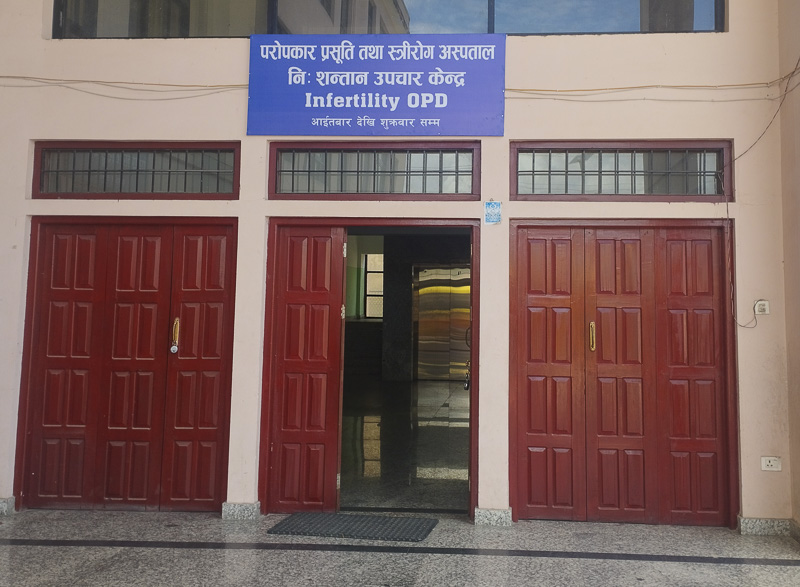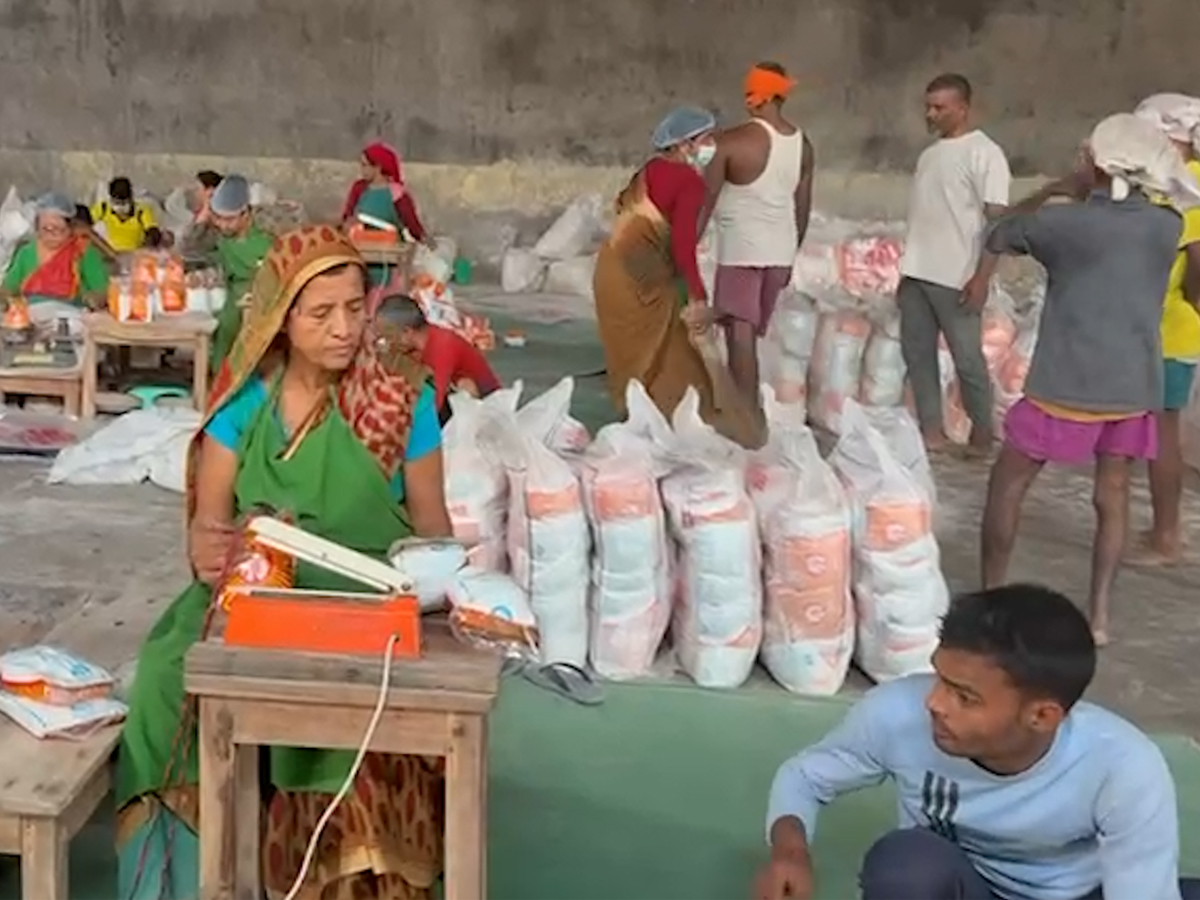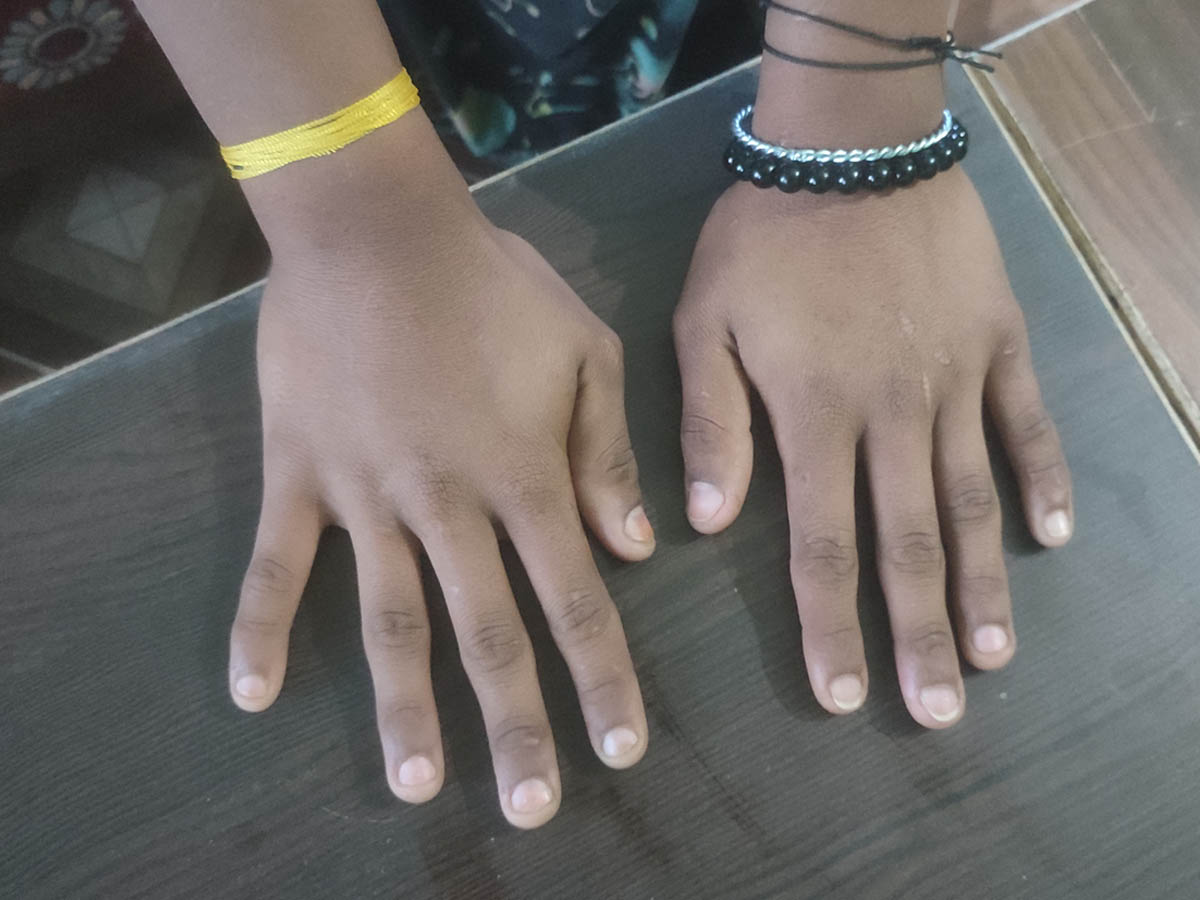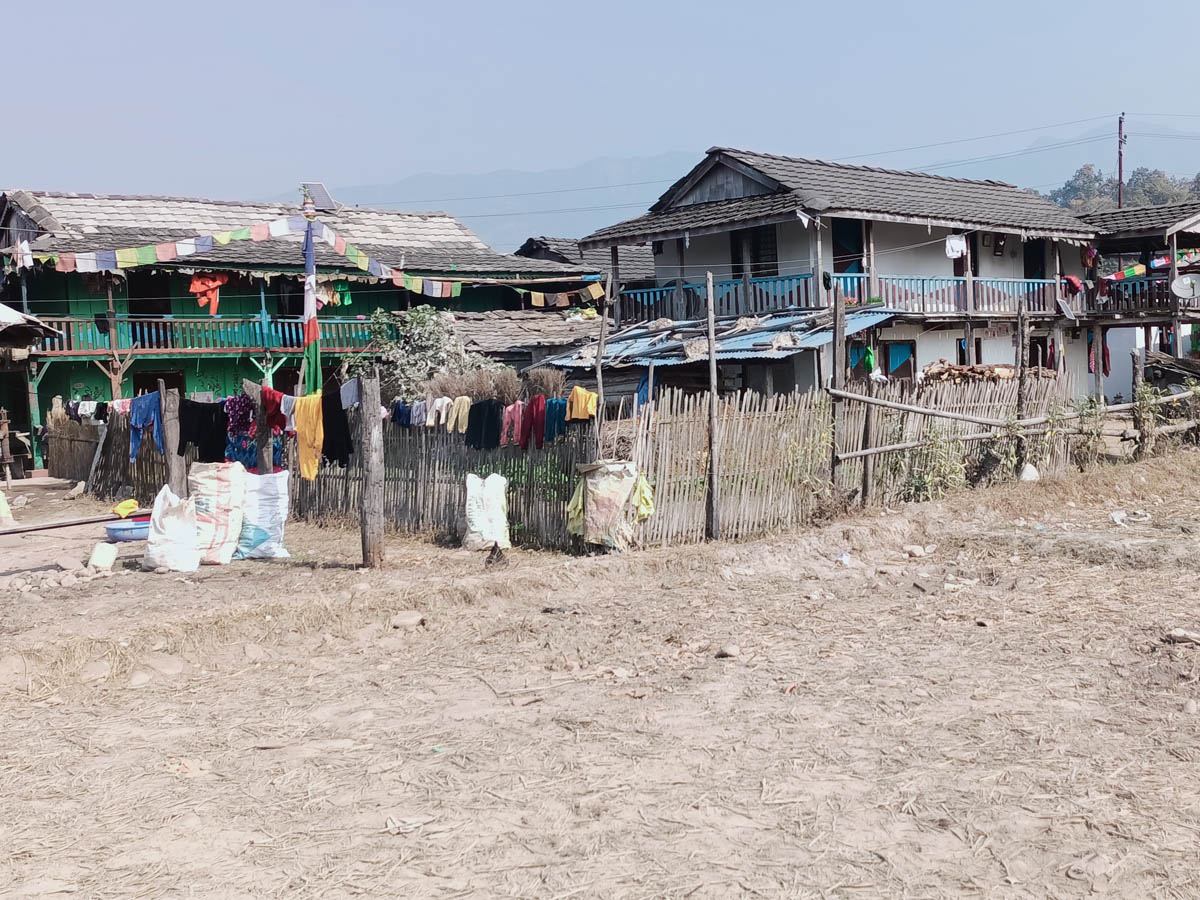It has been ten years since Rakesh (name changed) got married, yet he and his wife have been unable to have a child. We met Rakesh at the Paropakar International Infertility Center at Maternity Hospital in Thapathali, Kathmandu. Just 15 days after their wedding, Rakesh had left for Saudi Arabia for work. Five years later, he returned home on a month-long leave, hoping to start a family, but despite their efforts, the couple could not conceive.
 Now 35, Rakesh has returned to Nepal permanently and is eager to have a child. He took his wife to the Maternity Hospital, where a doctor referred them to the infertility center—a dedicated unit within the hospital for infertile couples. Tests at the center revealed that Rakesh has “azoospermia”—a condition where there is no sperm in the ejaculate. When a semen test shows zero sperm count on two separate occasions within a month, azoospermia is confirmed.
Now 35, Rakesh has returned to Nepal permanently and is eager to have a child. He took his wife to the Maternity Hospital, where a doctor referred them to the infertility center—a dedicated unit within the hospital for infertile couples. Tests at the center revealed that Rakesh has “azoospermia”—a condition where there is no sperm in the ejaculate. When a semen test shows zero sperm count on two separate occasions within a month, azoospermia is confirmed.
According to Dr Jwala Sangroula, the gynecologist treating Rakesh, his ten years working under the intense heat of Saudi Arabia may have affected his reproductive abilities. She has recommended sperm donation as an alternative.
Many men raised in moderate climates who work under the extreme heat of the Gulf countries for extended periods are found to have reduced fertility. Dr Sangroula says half of the patients who visit the infertility center face infertility issues similar to Rakesh’s.
High-temperature exposure results in low sperm counts, leading to infertility. Dr Binita Thapa, an embryologist at the Infertility Center, explains that long-term exposure to high temperatures reduces sperm production, and the few produced often have weak structure, poor shape, and low motility, making it difficult for them to reach the egg. This significantly reduces the chances of conception, says Dr Thapa.
Studies conducted by the Maternity and Gynecology Department and the Biochemical Department of Nobel Medical College support the observations of Dr Sangroula and Dr Thapa. Research shows that prolonged exposure to excessive heat causes abnormal sperm conditions in migrant workers in the Gulf, leading to infertility. A study on abnormal sperm patterns and risk factors among infertile men in eastern Nepal found that 46 percent of the patients were Gulf returnees. Among 186 men with infertility issues, 11 percent were diagnosed with azoospermia, 27 percent had abnormal sperm, and 23 percent had poor motility.
At Vatsalya IVF Center, a private fertility treatment facility, 50 percent of men and 50 percent of women who seek treatment have infertility issues. Most of the men with such problems have returned from foreign employment, according to embryologist Dr Suresh Yadav, who shared some concerning cases with NIMJN.
Patient 1 had only 2 million sperm, whereas the normal count is 15 million, with at least 42 percent showing motility, which was extremely low in this patient. The sperm shape and structure were only 1 percent, while the normal level is 4 percent.
Patient 2 had a similarly low sperm count, poor motility, and abnormal sperm shape. Patient 3 had 8 million sperm, but very low motility. Dr Yadav recommended IVF for this patient. All three of these patients had worked in the Gulf before returning to Nepal.

One couple seeking Dr Thapa’s help has an 11-year-old child and is trying for a second. The husband returned home four times in the past 11 years to attempt conception, but without success. They visited the hospital for treatment, where tests showed a sperm count of only 1 million and motility of just 2-3 percent. Dr Thapa believes long-term heat exposure may be responsible for this condition in the patient.
How heat affects sperm’s productivity
High temperatures can impair sperm production, decrease sperm count, and affect mitochondrial activity, which in turn reduces sperm motility, says Dr Yadav. He explains that sperm is divided into three parts: the tip of the sperm head, called the acrosome, which enables penetration of the egg; the midpiece, which contains mitochondria that provide the energy required for tail movement; and the tail, which moves in a whip-like motion to propel the sperm toward the egg. Dr Yadav further explains that energy is generated in the mitochondria through ATP production, essential for sperm motility. Just as we need energy to work, sperm also needs energy to move, which is produced by the mitochondria, Dr Yadav explains. However, mitochondria do not function independently—they require an optimal temperature and hydrogen potential, known as pH. When these factors fluctuate, sperm cannot produce the required energy, and they gradually become dysfunctional.
A person’s heat tolerance develops based on the geographical and climatic conditions they are born and raised in, and sperm function is similarly adapted. Nepalis are typically accustomed to average temperatures of 32-37 degrees Celsius, but those who go to work in the Gulf states face temperatures as high as 45 degrees Celsius. As a result, mitochondria, which function optimally around 35 degrees Celsius, are suddenly exposed to 45-degree conditions, hindering their functionality. This is why sperm motility declines after working and living in the Gulf for 5-7 years, according to Dr Yadav. Constant exposure to excessive heat throughout the day also causes the testicular region to heat up, leading to reduced sperm motility. Prolonged exposure to extreme heat further impacts spermatogenesis, resulting in decreased sperm production; over time, sperm counts can drop to zero, particularly in individuals returning from the Gulf, Dr Yadav adds.
Embryologist Dr Thapa notes that, beyond extreme heat, factors such as poor hygiene, work-related stress, tight-fitting innerwear, and unhealthy lifestyles also contribute to azoospermia.
The Gulf region experiences extremely high temperatures, with daily temperatures exceeding 40 degrees Celsius for 100 to 150 days a year. In 2021, temperatures in countries like Iran, Kuwait, Oman, Saudi Arabia, and the UAE reached as high as 50 degrees. If this trend continues, large portions of the region could become uninhabitable by the end of the century, as per a Carnegie Endowment for International Peace study. Climatologists warn that, in the near future, the region could be 4 degrees warmer by 2050—far exceeding the 1.5-degree limit needed to avoid global ecological collapse. Migrant workers are likely to be among the first to experience the extreme impacts of these conditions.
Another study by Vital Signs highlights that extreme temperatures in the Gulf states will have severe consequences on migrant workers' health.
Considering the WetBulb Globe Temperature (WBGT)—a measure of heat stress in direct sunlight that accounts for temperature, humidity, wind speed, sun angle, and cloud cover—migrant workers are at high risk from May through October every year, with the highest temperatures occurring in June, July, August, and September.
While the Gulf region continues to heat up, posing health hazards to workers, the number of Nepalis seeking employment there is rising, not decreasing. In the 2023/24 fiscal year, 70.11% of Nepali youths who went abroad for work chose the Gulf states, according to the Department of Foreign Employment. In total, 525,693 Nepalis obtained labor permits to work in Gulf nations: 193,338 in the UAE, 141,501 in Saudi Arabia, 134,669 in Qatar, 40,368 in Kuwait, 9,806 in Bahrain, and 5,910 in Oman.
This increasing trend suggests a potential rise in health complications among workers. Dr Meghanath Dhimal, research officer at the Nepal Health Research Council, states that rising temperatures are expected to result in greater health impacts.
Data deficit on infertility
Dr Sri Prasad Adhikari, director of Paropakar Maternity and Women’s Hospital, notes a rising number of patients with infertility-related complaints. He states that 25 out of every 100 couples face infertility issues.
According to hospital data, 4,174 patients sought infertility treatment at the hospital in the fiscal year 2020/21. This number increased to 8,309 in 2022/23, and to 9,011 in 2023/24. However, there is no national-level disaggregated data on infertility in Nepal.
The WHO reports that approximately 17.5 percent of the adult population—about 1 in 6 people globally—experiences infertility. WHO defines infertility as a disease of the reproductive system in either men or women, characterized by the inability to achieve pregnancy after 12 months or more of regular, unprotected sexual intercourse. Among 100 couples, 50 cases of infertility are attributed to male factors, while the other 50 are related to female factors.
Dr Dhimal, a researcher at the Council, explains that studies and research conducted in Nepal indicate infertility has become a pressing issue in the country, with environmental factors contributing to this problem.
Despite the growing concern over environmental impacts on infertility, no studies have been conducted in Nepal, says Dr Bibek Kumar Lal, director of the Family Welfare Division at the Department of Health Services. “We have heard that prolonged exposure to heat affects fertility, but we lack data on the extent of this impact on Nepalis,” says Dr Lal. “If we had credible studies and data, we could advocate for relevant policies.”
Infertility and declining birth rate
According to the 2021 census, Nepal's fertility rate has declined to 1.9. The National Population Policy (2021) aimed to maintain the fertility rate at 2.1 by 2033, but as the data shows, it had already fallen to 1.9 by 2021. “The government has so far been focused on family planning. Now it also needs to address infertility issues,” said Dr Adhikari, director at Maternity Hospital. “Our birth rate has already decreased.” He emphasizes the importance of investigating the causes behind the declining birth rate and the status of infertility. If the birth rate continues to fall at this rate, Dr Adhikari warns, it could lead to demographic imbalances, stressing the need for properly managed infertility treatment centers as infertility is one contributing factor.
“There’s a misconception that low birth rates are due to contraceptive use. This is not true,” added Dr Lal. “Countries like Korea, Japan, and China have some of the lowest birth rates globally, yet their contraceptive prevalence rate (CPR) is significantly higher than in Nepal.” According to Dr Lal, contraceptive use does not account for even 5 percent of the low birth rate, underscoring the need to investigate infertility’s direct impact on declining birth rates. He further warns that Nepal’s fertility rate has already decreased significantly and could reach alarming levels.
Dr Lal explains that infertility is now recognized as a serious issue, and the government is involved in establishing and expanding infertility treatment centers, although these efforts remain insufficient. Dr Dhimal highlights the importance of gathering statistics at the local level to effectively address the issue.
A study titled “Global, regional, and national burden of male infertility in 204 countries and territories between 1990 and 2019: an analysis of global burden of disease study,” published in BMC Public Health, indicates a steady global increase in the burden of male infertility from 1990 to 2019. The research concludes that prioritizing efforts to improve male fertility and reproductive health is essential.
Costly treatment
Infertility treatment is costly, primarily because the equipment and technology involved are expensive, explains Dr Adhikari, although treatment costs can vary depending on patients’ conditions.
Ovulation induction-timed intercourse (OITI) can be offered at a minimal fee, but Intrauterine Insemination (IUI) costs around Rs 10,000, and In Vitro Fertilization (IVF) costs at least Rs 1,50,000. According to Dr Adhikari, out of every 100 patients seeking treatment, two to three require IVF. A single hormone-producing medication essential for IVF can cost as much as Rs 8,000, and it often needs to be administered up to three times daily during the treatment process.
Patients coming from outside the Kathmandu Valley face additional travel and accommodation expenses, which further escalate the costs. Dr Thapa notes that the treatment process—both natural and artificial—begins on the second day of a woman's menstrual cycle, requiring those from outside Kathmandu to stay in the city, thus raising their expenses. Dr Adhikari suggests that the government should implement a tax-exemption policy for infertility medications and include infertility treatments in health insurance plans. This, he says, would make treatment more affordable.
In addition to being costly, infertility treatments also have low success rates. Couples engaging in regular intercourse through OITI may have higher chances of pregnancy, but the success rate for IUI on the first attempt is typically 10 to 15 percent and can even be as low as 5 percent, depending on the individual. With repeated IUI attempts, success rates can increase to 40-45 percent. IVF success rates range from 32 to 40 percent when using a couple’s own eggs and sperm, and from 60 to 65 percent when using eggs, sperm, or embryos from donors. There is no guarantee of success.
Sperm freezing, or sperm cryopreservation, is another effective infertility treatment. In this process, semen and sperm are frozen and stored for future use or donation. For sperm donations, a holding period of three to six months is required, during which the sperm is screened for infections before it can be used for insemination.
Dr Thapa shares that her treatment center offers sperm freezing services at a fee of Rs 3,000 per month. Many patients seek these services at the Maternity Hospital, but social stigma around infertility leads some couples to hesitate, according to Dr Sangroula. A wife can initiate pregnancy after her husband freezes his sperm, allowing him to work abroad. There are cases where couples have successfully done this to start a family. However, once wives become pregnant through sperm freezing while their husbands are away, they often face social scrutiny, discouraging many couples from choosing this option. Additionally, some couples refrain from the process due to disapproval from family members, notes Dr Sangroula.
(This story was published with support from Humanity United.)
Read our Republishing Policy here.



